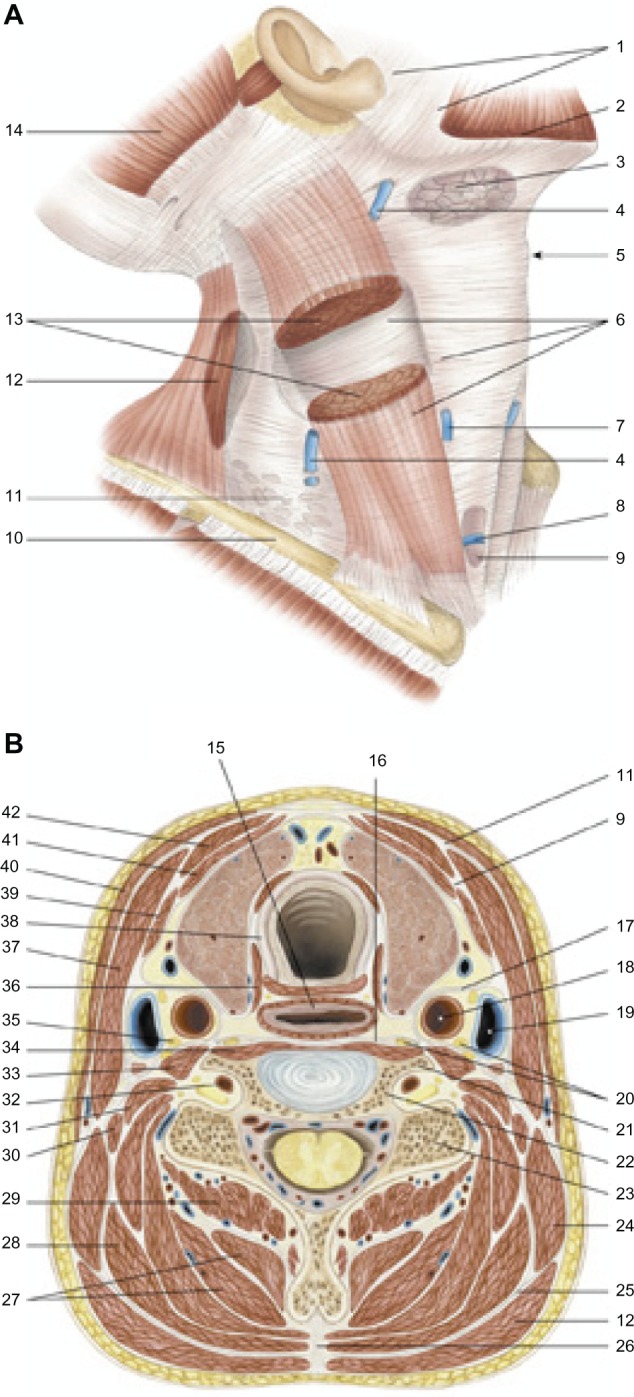Figure 6.

Fascias of the neck. Deep traumas can also affect the fascia and the viscera, which then go through an identical healing process. Reproduced with permission Anastasi et al. AA VV, Anatomia dell’uomo, 4 ed, Edi.ermes, Milano [Human anatomy].114
Notes: 1, parotid fascia, masseteric fascia; 2, platysma; 3, submandibular gland; 4, external jugular vein; 5, laryngeal prominence; 6, superficial cervical fascia; 7, anterior jugular vein; 8, the jugular venous arch; 9, middle cervical fascia; 10, clavicle; 11, superficial cervical fascia; 12, trapezius muscle; 13, sternocleidomastoid muscle; 14, occipital muscle (of the epicranic muscle); 15, esophagus; 16, deep cervical fascia; 17, carotid sheath; 18, common carotid arter; 19, internal jugular vein; 20, chain of the sympathetic nervous system; 21, 6° cervical vertebrae, anterior tubercle; 22, 6° cervical vertebrae, transverse process; 23, 6° cervical vertebrae, posterior tubercle; 24, levator scapula, 25, nuchal’s fascia; 26, nuchal ligament; 27, semispinalis muscle of the head and neck; 28, splenius muscle of head and neck; 29, multifidus muscle of the neck; 30, posterior scalene muscle; 31, middle scalene muscle; 32, vertebral artery; 33, anterior scalene muscle; 34, long muscle of the neck; 35, phrenic nerve; 36, inferior constrictor muscle of the pharynx, cricopharyngeal portion; 37, sternocleidomastoid muscle; 38, trachea; 39, omohyoid muscle; 40, platysma; 41, muscle sternothyroidean; 42, muscle sternohyoidean.
